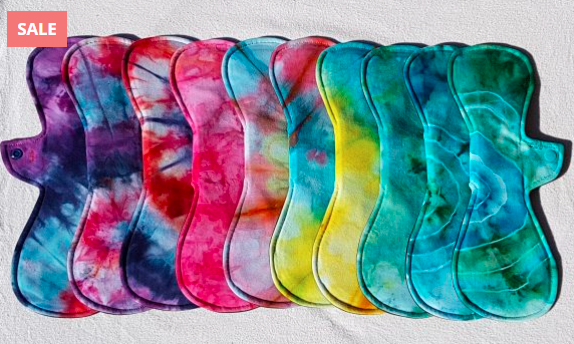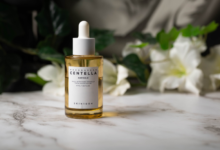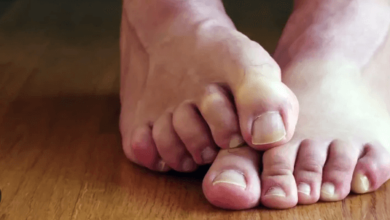Pop Culture and The Rise of Reusable Pad in Brampton, ON

Sanitary pads, periods, women’s sexual health, and menstruation are no longer niche topics. The rise of pop culture has put an end to common misconceptions and taboos. Another breakthrough in pop culture is ‘reusable pads.’ Their growing visibility reflects a larger societal shift toward eco-consciousness and breaking menstruation taboos. So, let’s dive into how the concept of a reusable pad in Brampton, ON, is making waves in pop culture.
Let’s Explore the Roots of a Reusable Pad in Brampton, ON
For decades or maybe centuries, women’s sexual health has often been represented in hushed tones or euphemisms. Many cultures still consider it a dishonorable talk. However, the arrival of modern culture has lifted the veil on basic biological phenomena, eliminating the taboos and promoting consciousness.
Due to a lack of awareness and essential resources in the medieval era, women utilized makeshift pads or tampons. These menstruation products were often made with scrap fabric or rags. Yet, they were unsanitary. So, in 1896, Johnson & Johnson released their first sanitary napkins, and from there, the revolution started.
See also: The Fight in Schools Against Period Poverty Canada
World War I and Its Impact On Menstruation
Nowadays, manufacturers use cellulose in sanitary pads because it is the most effective material for absorption. The use of cellulose goes back to the First World War when nurses observed its high absorption power. As a result, Kotex introduced its first cellulose sanitary napkins in 1921.
The Role of Media in Breaking Taboos
If you have seen ‘Pad Man,’ ‘Menstrual Man,’ or ‘Period. The End of Sentence,’ you would know what we are talking about. We have noticed a dramatic shift in recent years, with TV shows, movies, and influencers openly discussing periods. Reusable pads have joined the conversation and are featured as a viable, eco-friendly alternative—documentaries like ‘Period. The end of the Sentence’ spotlights the importance of sustainable menstrual products, inspiring audiences worldwide to explore reusable options. However, movies like ‘Pad Man’ or ‘Menstrual Man ‘highlight the need for menstrual education for both men and women.
Fashion and Design Meets Sustainability
Reusable pads are no longer bland or purely functional—they are now also stylish. Designers and eco-friendly brands are creating pads with vibrant colors, patterns, and premium materials that make users feel good about their choices. Therefore, eco-friendly brands are now partnering with designers to turn reusable pads into lifestyle products. Brands like ‘The Reusables Project’ are transforming the perception of menstrual products, making a trendy reusable pad in Brampton, ON, desirable and accessible.
Influencers Deserve the Credit Too
Social media influencers are some of the biggest champions of reusable pads. Since they share personal experiences and product reviews, they turn a higher percentage of the audience into eco-conscious consumers. Similarly, content creators who focus on zero-waste and sustainable living frequently feature reusable pads in their posts. For Example, influencers like Nadya Okamoto founded the ‘Period Movement’ and brought periods—and reusable pads—into global conversations.
Educational Efforts in Making Reusable Pads a Norm
Children are the quickest learners. Therefore, if you teach a child something, they will remember it forever. Menstruation must be taught in schools as part of basic science. Back in the day, teachers would avoid talking about menstruation in class, especially in front of boys. Thanks to popular culture, the practice has been abolished.
Educational Programs now feature reusable pads to empower young people to make better choices. Moreover, platforms like Netflix and YouTube host educational content about reusable pads, spreading awareness to global audiences.
Global Movements for Menstrual Hygiene
In the present day, the world is aware of menstruation and its challenges. It identifies menstruation as a bodily response to hormonal fluctuation rather than a stigma. Therefore, every year on May 28, the world celebrates women and menstruation. The day focuses on breaking stigmas and misconceptions regarding Periods and promoting sustainable menstrual products. Furthermore, at the UN-Water Summit in March 2023, the WHO emphasized the importance of menstrual health. They urged nations to incorporate menstrual health services into their national health coverage policies. Another, called ‘The Rosie’s World,’ is an international exchange program for Girl Guides featuring Red Pride Week and Menstrual Health Day campaigns. It has provided menstrual hygiene education to over 36,000 girls and young women worldwide.
Why Does It Matter?
The rise of reusable pads in pop culture is not just about trends; it represents a paradigm shift. It shows a world more comfortable with open discussions about periods and committed to sustainable practices. By embracing reusable pads, pop culture is sending a powerful message: menstruation is natural, and eco-conscious options are the future.
Conclusion
The word ‘Period,’ to indicate menstruation, would never appear or be heard on television before 1985. However, with the rise of modern culture, menstruation started becoming a casual topic. As a result, brands began recognizing the need for healthier and more sanitary products, which led to the invention of reusable cups, tampons, and pads. Nonetheless, pads are still the most used sanitary product among women. Therefore, to cater to the masses, brands like The Reusables Project have come up with a more practical product: a reusable pad in Brampton, ON, to promote sustainable and eco-friendly products.







